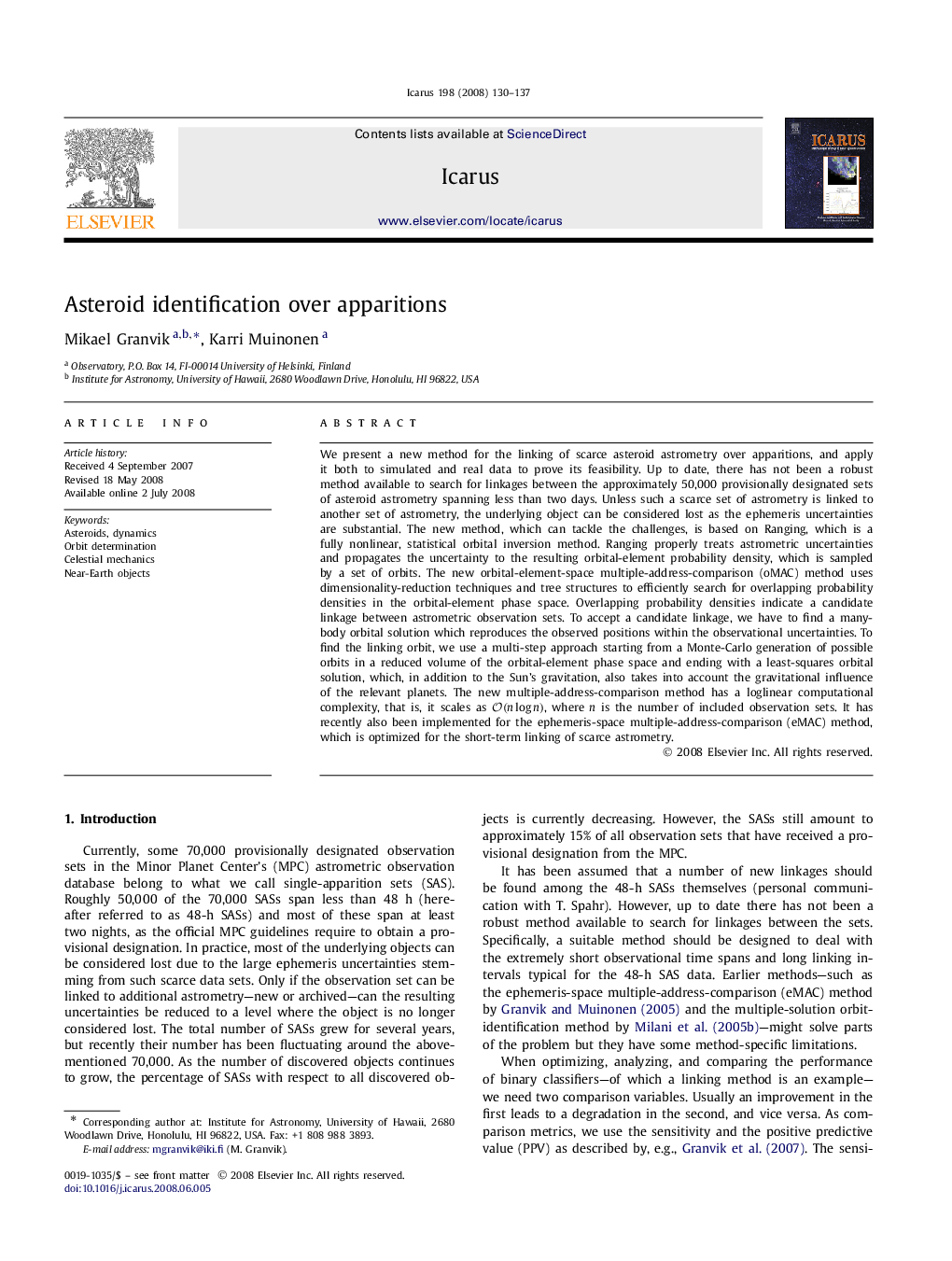| Article ID | Journal | Published Year | Pages | File Type |
|---|---|---|---|---|
| 1774787 | Icarus | 2008 | 8 Pages |
We present a new method for the linking of scarce asteroid astrometry over apparitions, and apply it both to simulated and real data to prove its feasibility. Up to date, there has not been a robust method available to search for linkages between the approximately 50,000 provisionally designated sets of asteroid astrometry spanning less than two days. Unless such a scarce set of astrometry is linked to another set of astrometry, the underlying object can be considered lost as the ephemeris uncertainties are substantial. The new method, which can tackle the challenges, is based on Ranging, which is a fully nonlinear, statistical orbital inversion method. Ranging properly treats astrometric uncertainties and propagates the uncertainty to the resulting orbital-element probability density, which is sampled by a set of orbits. The new orbital-element-space multiple-address-comparison (oMAC) method uses dimensionality-reduction techniques and tree structures to efficiently search for overlapping probability densities in the orbital-element phase space. Overlapping probability densities indicate a candidate linkage between astrometric observation sets. To accept a candidate linkage, we have to find a many-body orbital solution which reproduces the observed positions within the observational uncertainties. To find the linking orbit, we use a multi-step approach starting from a Monte-Carlo generation of possible orbits in a reduced volume of the orbital-element phase space and ending with a least-squares orbital solution, which, in addition to the Sun's gravitation, also takes into account the gravitational influence of the relevant planets. The new multiple-address-comparison method has a loglinear computational complexity, that is, it scales as O(nlogn)O(nlogn), where n is the number of included observation sets. It has recently also been implemented for the ephemeris-space multiple-address-comparison (eMAC) method, which is optimized for the short-term linking of scarce astrometry.
